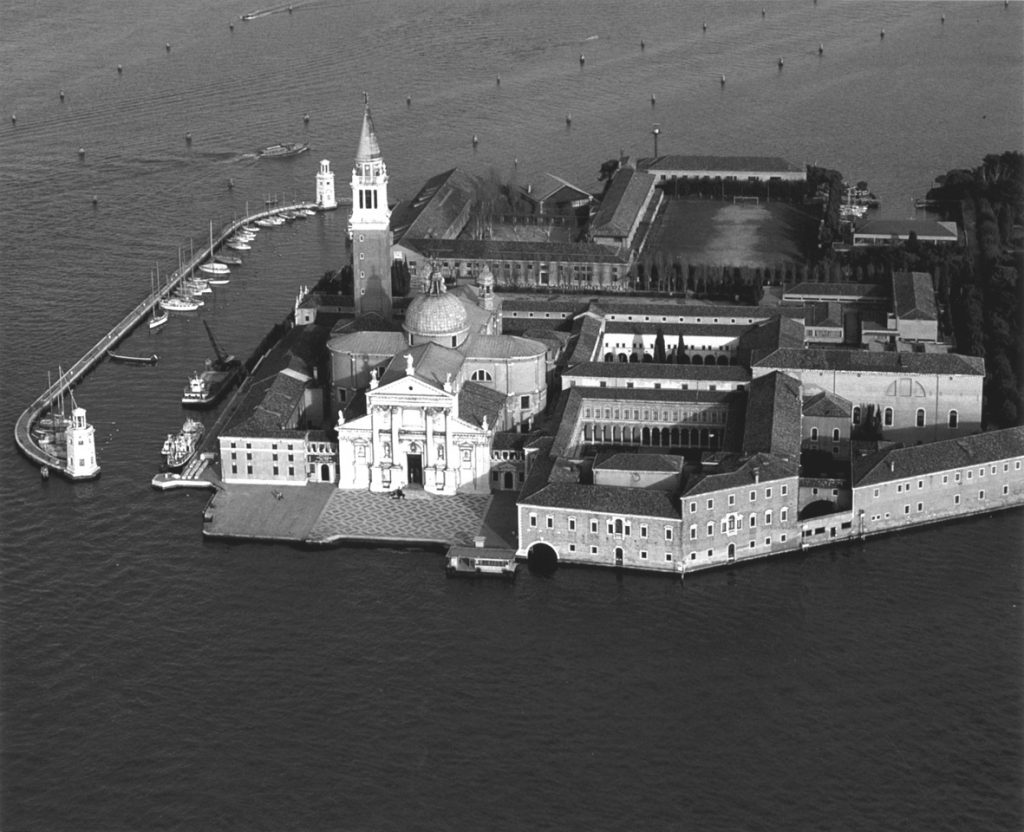History

The Giorgio Cini Foundation was constituted by Count Vittorio Cini, in memory of his son Giorgio, in April 1951 on the Island of San Giorgio Maggiore, with the aim of restoring the Island of San Giorgio Maggiore and of creating an international cultural centre that would re-integrate the Island into the life of Venice.
Restoration
After 150 years of military occupation, the ex Benedictine Monastery was devastated. A philological restoration of the Island brought back to their original beauty spaces such as the Longhena Library, the Palladian Cenacle, the Palladian Cloister and the Buora Cloister.
Education and training
The creation of the Foundation was an insightful response to the perceptible signs of depopulation, the progressive abandonment of productive uses, and the ‘identity’ crisis Venice was to face against the growing demands of modernity. In the early 1950s the Foundation had already understood the necessity of revitalising the city by promoting new uses compatible with its extraordinary urban fabric, and created the Nautical Centre, the Arts and Trades Centre and the Culture and Civilisation Centre.
Promoting culture
The Culture and Civilisation Centre included the ‘School of San Giorgio for the Study of Venetian Civilisation’, inspired to Anglo Saxon institutes for advanced studies. The School was broken down into four institutes: the Institute of Art History, the Institute for the History of the Venetian State and Society, the Institute of Literature, Music, and Theatre, and the ‘Venice and the East’ Institute.
